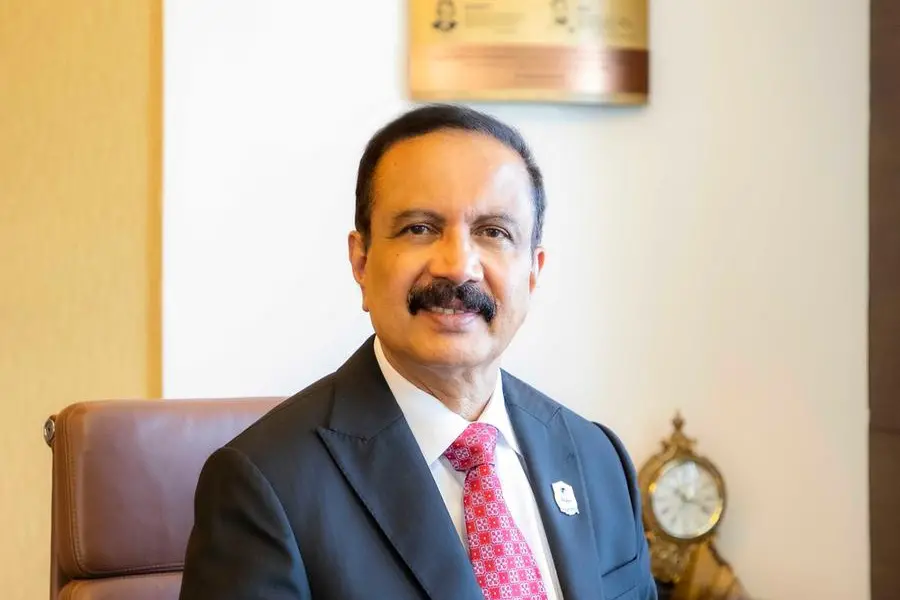PHOTO
Dr Azad Moopen, founder and Chairman of Aster DM Healthcare, plans to invest close to 20 billion Indian rupees ($240 million) over the next three to five years to fuel the company's growth.
The company already set the wheels in motion following the separation of its India and GCC businesses earlier this month, which saw the hospital chain sell a 65% majority stake of its Gulf business for $1.01 billion to Alpha GCC Holdings, a consortium led by the Dubai-headquartered Fajr Capital. The company further confirmed that 70% to 80% of the payout will be distributed as a dividend to its shareholders, which will be finalised in February of this year.
Dr Moopen called the separation of the two units a “strategic move” and the “undoing of mistake” made six years ago, when the company went public in India. He explained: “We thought India would provide good multiples, and we had a good percentage of the business in the country at that point. But we soon realised growth in the India market did not give value to a business which was outside its scope. So, while we had 75% to 80% of our business in the GCC, it was being discounted by India…”
Aster DM Healthcare’s current market capitalisation of the combined businesses is approximately $2 billion, with the GCC business’s enterprise value pegged at $1.7 billion.
While the 70-year-old industry veteran is doubling down on growing the publicly traded India business in the near term, a listing for the GCC unit is also imminent, he confirmed to Zawya, on the sidelines of Arab Health.
“If you look at GCC [market], Saudi Arabia is where the most of our growth will be happening, while the UAE is definitely very saturated. Kuwait is another market where we would like to extend our presence. But most of this can only happen by 2030, following the listing of the GCC unit by 2027 or 2028,” Dr Moopen said, adding that it was still too early for them to share more details.
India expansion
The company, which posted an annual turnover of INR119 billion in FY22–23, is also on track to boost its presence in India over the next two to three years.
“Healthcare currently accounts for 3% of India’s GDP (Gross Domestic Product), and we must double that number in the coming years, which is what we are currently focused on, to bridge this significant gap in the market,” Dr Moopen said.
Presently, Aster operates across five states in India, with a network reach of 19 hospitals, 13 clinics and 226 pharmacies. With the planned expansion, another 1,500 beds will be added to build the company’s capacity to 6,000 beds in a few years.
“There are three ways we can deploy our expansion; first is through geographic growth,” he explained. “We are already active in South India across five states, with a major presence in Kerala. One way forward is through brownfield expansion, which is by taking over existing hospitals. Most venture capitalists will tell you this is the most profitable move, where we have the advantage of utilising existing staff and will make for an easier union.”
Dr Moopen said the second option open to them was constructing greenfield hospitals in the same area, before going down the third route, which was expanding in newer geographies, which includes a significant presence in North India, where Aster has yet to expand its network.
“At the onset, we have a preference for brownfield and greenfield network expansion, but we are also looking at some acquisitions in areas we may not have organic growth in thus far,” he continued.
Dr Moopen revealed the company was keenly looking at acquisitions in the hospital sector, “either a fairly large-sized single hospital, which has a good reputation, good medical programmes and are making a profit,” or a smaller structure in a city they want to expand into.
“The plan is not to go somewhere and start very small. We want to be noticed and build the company into a top-ranking medical institution, which is counted among the top three players in the country,” he said.
With an investment of INR15 billion to INR20 billion required to fund this aggressive growth in the India market, Dr Moopen said the company was looking at private equity funding to fuel this expansion, preferably from a pool of existing shareholders.
“The QIP (Qualified Institutional Placement) route is also open to us in India, which will allow us to raise a lot of capital for investment,” he added. “By 2025-25, we will hope we will be onboarding marketers to either invest funds in the company or come with a platform of an existing family care plan that makes it easy for us to work together.”
With the company growing at 20-25% annually, according to Dr Moopen, the requirement for human capital will also become a necessity, with plans to increase its 33,000 strong workforce by 20% in the near future, across India and the GCC.
(Reporting by Bindu Rai, editing by Seban Scaria)




















